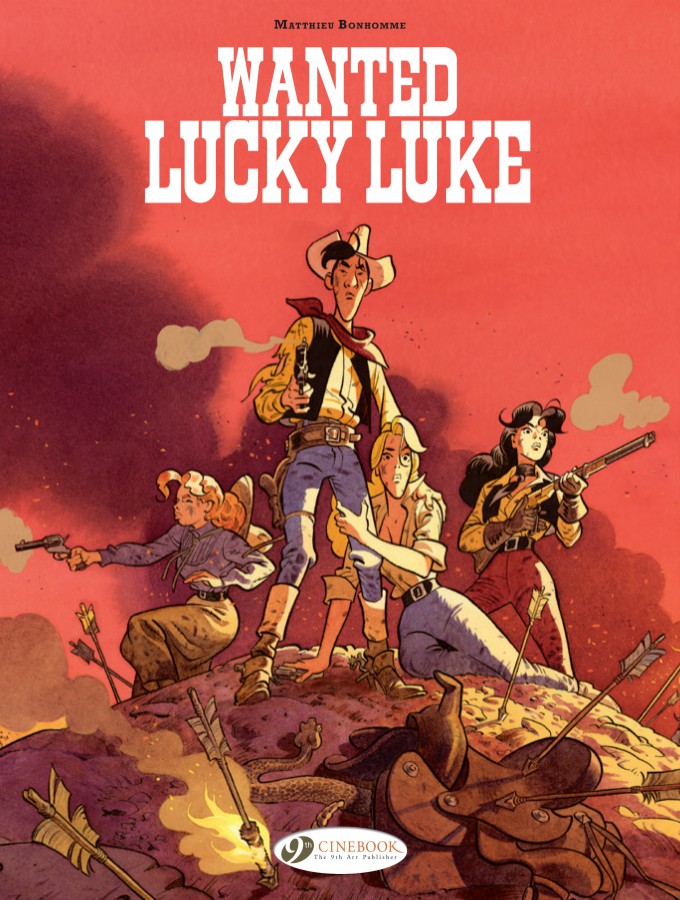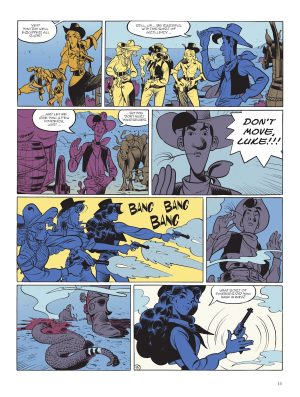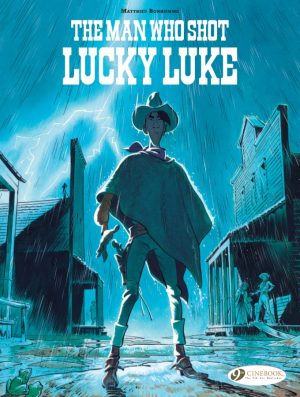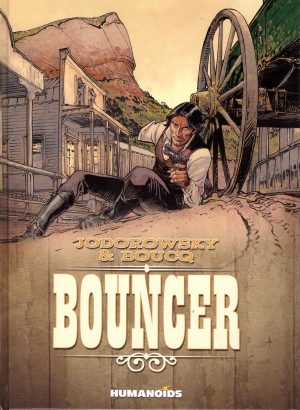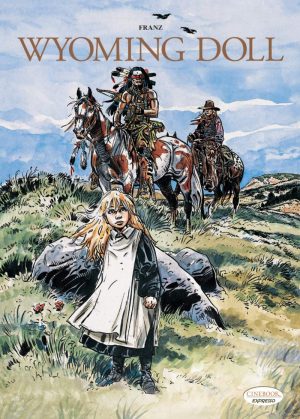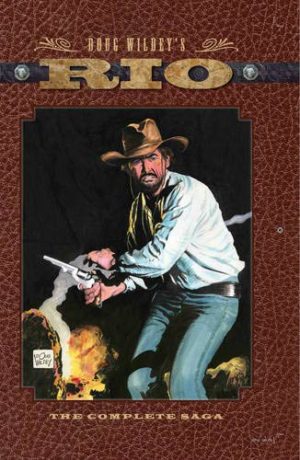Review by Karl Verhoven
This is Mathieu Bonhomme’s second take on upgrading Lucky Luke to a more realistic environment, and whether or not you believe that’s necessary, The Man Who Shot Lucky Luke was a creative success. On that basis a second shot is welcome.
While ostensibly another straightforward Western adventure, there are differences in the small details, which result in this being a homage to the earliest Lucky Luke stories, created by Morris alone. Bonhomme reworks old plots, combining them, there are appearances for long discarded creations, people not used in Lucky Luke since the early 1950s, and he underlines Luke’s isolation. That’s given lip service in every adventure’s final panel when he sings about being a lonesome cowboy a long way from home, but here a choice has to be made.
Luke discovers posters are being circulated offering a $5000 reward for bringing him in alive, but he has other problems he’s unaware of. When stopping to help three sisters with their cattle train each of them considers him a fine catch, and the tribe he prevents from killing them take the matter very personally.
The art is as phenomenally polished as last time round, being a sort of halfway house between cartooning and realism. Except as seen on the cover, it leads to an awkwardness with regard to face shapes. Last time Luke’s head being long and thin stood out for being relatively consistent with his cartoon version, but he was surrounded by others looking relatively normal. One of the sisters having the same distinctively shaped head strikes a wrong note every time she’s seen. It’s also noticeable that Bonhomme’s taken a different approach with the colours, which are far more distinctive and really resonate. Variations of a single shade are applied according to the conditions of the moment, so the sample page set at dusk is in shades of blue with yellow used for highlights. Even darker variations elevate a tense and exceptionally well broken down sequence at night near the end.
Equally assured touches apply to the writing. “Stranger you are free”, reads a town’s signpost, “free to get hanged”! While the primary purpose to some of the cast is homage, Bonhomme ensures they’re nonetheless efficiently worked into the plot, and while the women Luke helps at first seem little more than cliché for all their personality, Bonhomme has stronger roles for them.
For all the homage and the superb colouring, this lags a little behind The Man Who Shot Lucky Luke for being more episodic, although that could also be part of the homage as Luke’s earliest outings were all short stories. It’s still very polished, though, and in the great European tradition of Westerns.
